

Wauquiez Pretorien 35
Seaworthy IOR design makes this small cruiser offshore capable The last few years I have been presenting a slide show at the Strictly Sail shows called "Twenty-five great boats to sail around the world." The list includes some of my favorite boats such as Contessa 32, Pacific Seacraft 37, Hallberg-Rassy 43, Tayana 52 and Bowman 57 among others. I often surprise people when I tell them of another boat that makes my favorites list-the diminutive but capable Pretorien 35. I can see a day in the not too distant future when I downsize to a more modest cruising boat, and the Pretorien would be near the top of the list of boats that I would seriously consider.
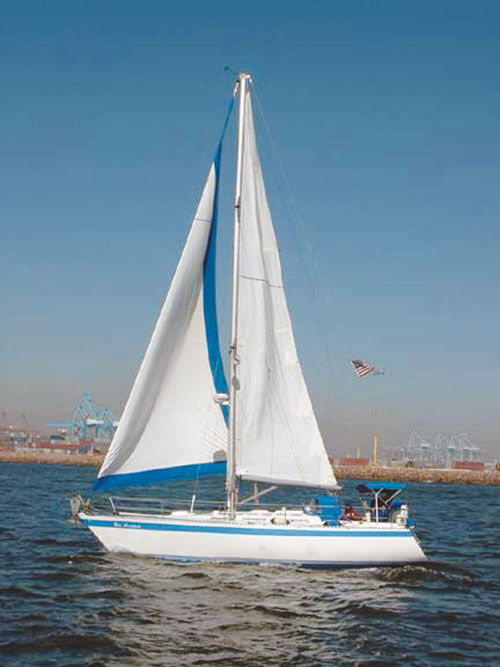
Built by Chantier Henri Wauquiez in Mouvaux, France, the Pretorien 35 was introduced in 1979. Although exact numbers differ, around 200 boats were launched before the model was discontinued in 1986. Designed by Holman & Pye (like the smaller Wauquiez classic, the 32-foot Centurion), the Pretorien seems more British than French. But that's not surprising. Henri Wauquiez, who died in 1999, admired English boats and in particular the designs of Kim Holman. Wauquiez purchased his first boat in 1964, the English-built, Holman-designed Elizabethan 29. Wauquiez liked its handsome sheer and steady bearing in a seaway. Soon he began finishing out Elizabethans for the French market and a passion for sailboats blossomed into a business.
First impressions Certain features date a boat like rings on a tree stump. Pinched ends, extreme tumblehome and a high-aspect-ratio main are unmistakable marks of early IOR-influenced designs. The Pretorien came along when strict adherence to the rule was waning, but it still has the look of an IOR boat. However, the IOR was terribly maligned, and it's not the horror story of a rule its been made out to be. Many factors influence seaworthiness and another IOR-inspired creation, the Contessa 32, is the most seaworthy and seakindly boat I have ever sailed, and I have sailed a lot of boats. A well-designed underbody is hard to find, and it is what's below the waterline that counts. The Pretorien 35, like a lot of old IOR boats, has a sweet hull shape. The entry is raked, and there's enough forefoot to keep the boat from pounding. A reverse transom helps deliver a long waterline of 30 feet, 4 inches. The fin keel is mounted on a deep stub and the draft is a healthy 6 feet. The deep rudder is mounted well aft for good steering control and incorporates a narrow but full skeg. The Pretorien displaces 13,000 pounds with 6,000 pounds of ballast, for a ratio of 46%. It is a stiff boat.
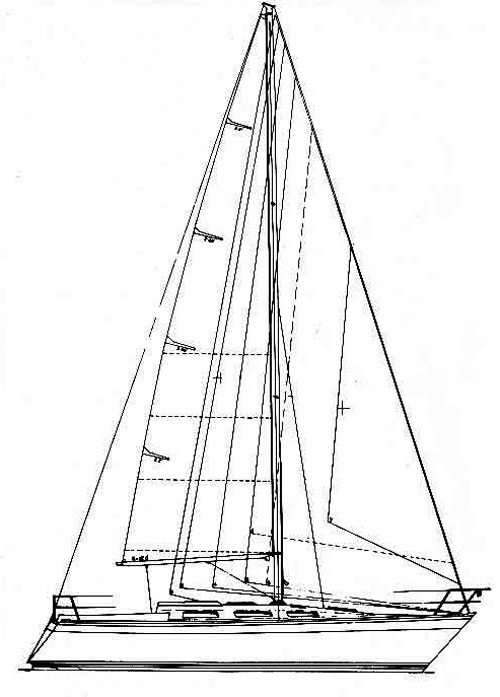
The wedge deck is low slung and blends neatly into the overall flow of the lines. This era of Wauquiez boats are sometimes referred to as French Swans, and there is merit to the nickname-they're great looking boats. The sail area/displacement ratio is just 15.6, typical of an IOR boat with a stubby boom, and it was designed to carry a big overlapping genoa. The Pretorien finds its stride when the wind picks up. The Pretorien 35's most famous owner was Hal Roth. The legendary mariner and his wife Margaret sailed their Pretorien Whisper around the world and across the Atlantic several times.
Construction The Pretorien is built for ocean sailing. The hull is solid fiberglass and has six full-length longitudinal stringers that stiffen the panels and encapsulate the bulkheads. The bulkheads have the cleanest tabbings I have ever observed in an older fiberglass boat, and they're not going anyplace with the 18-ounce fabric that was used for better resin saturation. This lighter fabric meant that more of it was necessary-this is a less cost-effective way to build a boat, but it's the right way. A close inspection of the lockers will reveal tidy fiberglass work. The deck is balsa cored, but Wauquiez was careful to isolate the balsa with resin pockets and was one of the first builders to sculpt the core and use solid laminates beneath through-deck fittings. The use of a keel stub combines the advantages of internal and external ballast. The Pretorien 35 was built to Lloyds scantlings, which Henri Wauquiez considered the highest standards.
What to look for Two items are potential issues for Pretorien 35 owners. First is the engine. There is nothing wrong with the Volvo Penta 28-horsepower diesel. It's the saildrive transmission that has to be closely inspected. Some Pretoriens were built with straight shafts, and if you can find one that's a plus. If you are looking at a saildrive model be sure to check the through-hull seal and the corrosion on the aluminum lower unit that covers the gearbox. The second item is the teak decks. This was an option, but unfortunately the original teak was too thin, and after a few rounds of refinishing they were shot, with exposed fasteners and missing caulk. Removing the teak decks, sealing the deck and applying a nonskid surface is a big job, and if you have a yard do it, an expensive job. Look for a boat that didn't have teak decks originally or that has already had them removed. There is a Pretorien here in Ft. Lauderdale with new teak decks that are adhered without any screws-the boat is stunning.
On deck The Pretorien 35 cockpit, like the rest of the boat, is designed to be at its best in blue water. It is not the most comfortable cockpit for lounging around at anchor or in a marina. It is compact, and most boats have wheel steering that cramps things a bit further. There is a solid bridgedeck with the mainsheet traveler running across it. While this arrangement is nice for trimming, and gives excellent end-boom purchase, it is a pain to maneuver around when using the companionway. The primary sheet winches are well forward on the coaming, and this, combined with the mainsheet position, makes it difficult to fit a wraparound style dodger. The side decks are quite wide, especially for a 35-foot boat, and making your way forward is easy even in a blow. Of course the Pretorien's soft motion also makes navigating the foredeck safer. A long teak handrail lines the coach roof, but it's low and difficult to reach. The headsail tracks are set inboard. A single pod chainplate supports the shrouds on each side and a babystay helps keep the mast from pumping and for shaping. Runners are a more effective way to quiet the double-spreader mast. There is a small chain locker forward and if you plan to cruise the boat you may want to beef up the anchor roller arrangement.
Down below The Pretorien 35 interior will force you to honestly assess your sailing agenda. There is nothing wrong with it and it's finished very nicely, but it's just snug. If you really want to travel far across oceans, then you will come to appreciate the compact, practical layout with well-placed handholds and nice sea berths. If you hope to linger off beautiful islands or spend your time marina hopping, the lack of space may be frustrating. The layout is predictable, but it works. There is double V-berth forward that is decently sized. There is a hanging locker to starboard. The head is next aft to port, and it's a tight squeeze. The saloon features a comfortable U-shaped dinette to port with a settee opposite. The nav station is also to port while the U-shaped galley is opposite and just to starboard when you drop below. The galley includes two small, round sinks (a single, larger sink would be better), a two-burner gas stove and a fridge compartment aft. Most boats have a ceramic tile surface, which looks nice but I have been told is hard to keep clean. Aft of the nav station is a quarter cabin. The bunk is not really a double, but that's OK; this is a great spot for the off watch. You are close to the companionway, the motion will be easy and you have some privacy too. There is another hanging locker here, and I have seen this converted to a wet locker. The cabin is finished in a light blond teak. It's very nice and Wauquiez was ahead of his time in trying to brighten the interior woodwork. The original portlights were not opening and ventilation can be a problem. Consider swapping them for opening ports and make sure the fans are working.
Engine Most Pretoriens were fitted with Volvo MD 11 C diesel engines. While this 28-horsepower workhorse is a good engine it has a few drawbacks. Replacement parts are very expensive, and at some point it becomes silly to spend real money keeping an old engine running. Secondly, as mentioned before, most are set up with saildrive transmissions. Corrosion is the curse of saildrives, and replacing the lower unit is expensive. Finding a used Pretorien with a new lower unit, or better yet, a new engine, is worth paying for. Also, some boats came with straight shafts and standard transmissions. Access is decent from behind the companionway and through the starboard cockpit locker. The fuel tank holds 21 gallons, which does not translate into a lot of miles. You will be carrying jerry cans on deck for long passages.
Underway Like other boats of this era, including the Contessa 32, Rival 34 and Nic 35, the Pretorien's low sail area/displacement ratio of 15.6 is a bit misleading. The boat is a bit of a slug in light air, but that's not what you buy a Pretorien for anyway. It is a fine performer in moderate breezes and sails like a larger boat when the wind really pipes up. Those are the sailing qualities you look for in a true offshore boat. You will appreciate the 46% ballast/displacement ratio when it is honking and you're clawing to weather or forereaching in a deep a gale. The high-aspect rig with a short boom requires a big genoa when reaching. And there is nothing wrong with this. Ripping along with a poled out genoa is a low-stress way to cross oceans. The main will spend many passages resting on the boom while the genoa does the work. Hal Roth was delighted with the Pretorien's ability to log 150-mile-plus days offshore, and that is good going in any cruising boat.
Conclusion The Wauquiez Pretorien 35 is quietly attaining classic status. Sure it has its compromises, what boat doesn't, but its seaworthy design, quality construction and proven offshore capability make it a terrific small cruiser.
Also in Used Boat Notebook
- Hunter Passage 42
- Pearson Rhodes 41
- Santa Cruz 52
- Allied Princess 36
- Kelly-Peterson 46
Also from Staff
- Tor Johnson
- Learn to Sail Better
- New boat: Aureus XV Absolute
- Remembering Hobie
- Catalina 275 Sport
- New boat: Saphire 27
BoatNews.com
Portrait of a building site / Wauquiez, sailboats for demanding owners who love beauty
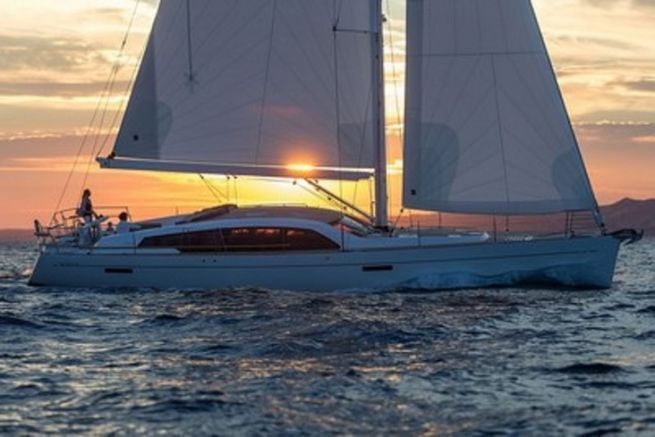
The only shipyard in the North of France, Wauquiez has been building comfortable, fast and reliable sailing boats for over fifty years. History and review of a shipyard that builds sailboats designed to last.
Henri Wauquiez , a passionate founder
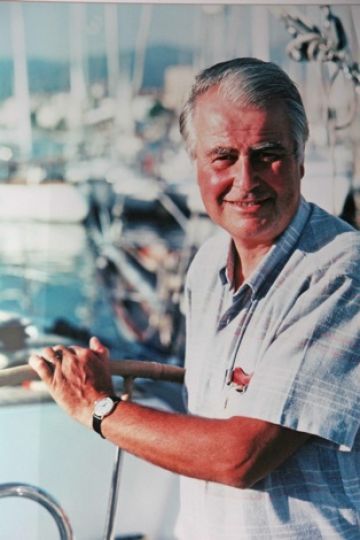
The Wauquiez shipyard was founded by Henri Wauquiez , who came from a large family of tanners in northern France. One of eight children, Henri attended college in England and then did his military service as a pilot in the light aviation. Passionate about yachting , Henri and his wife Véronique spend all their summers cruising the Mediterranean coast.
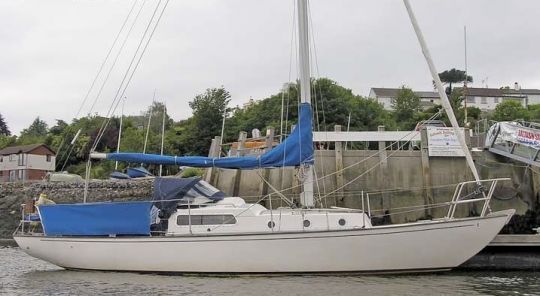
For the summer of 1964, they acquired an Elizabethan 29 designed by Kim Holman and built by the Webster shipyards in the Isle of Wight in the south of England. The English sailboat made a strong impression on the French Riviera, so Henri contacted Kim Holman to suggest marketing the boat in France. During their stopovers, Henri and Véronique presented their boat with passion and by the end of the summer they had received seven orders. The English shipyard being unable to produce the boats sold within the time limit, Henri transforms a part of the family tannery to manufacture under license the Elizabethan 29.
Thus was born the Wauquiez shipyard .
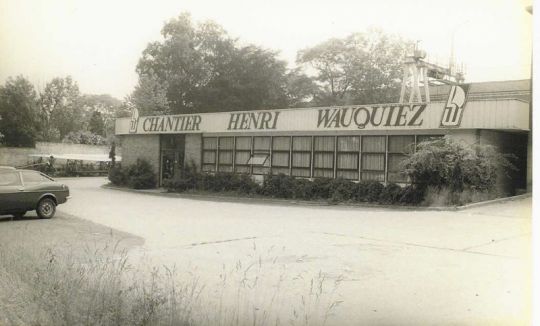
Kim Holman, fully satisfied with his collaboration with the young French yard, continued to work with Henri Wauquiez and his team. In 1968, he designed, among others, the Centurion 32, of which 380 were produced.
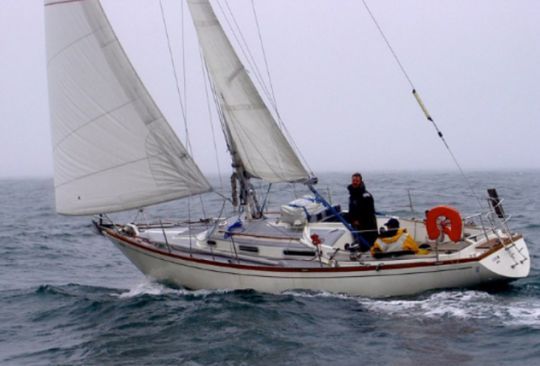
The race-cruise as DNA
After the success of the Centurion 32 wauquiez again called on the English firm Holman & Pye to design the Gladiator a 32-foot cruiser.
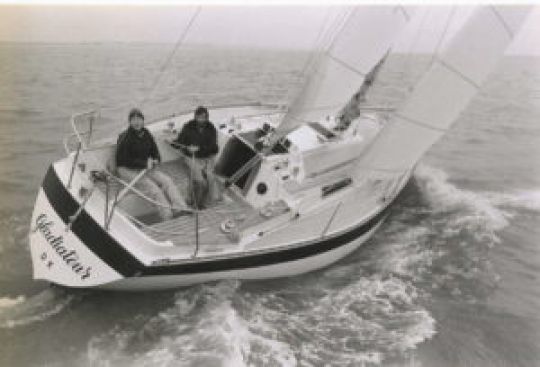
Then the site goes up in power by releasing the Hood 38 designed by the eponymous firm, which remains the only ballasted dinghy built by the yard. Then the Pretorian this 35-foot Holman design is one of the shipyard's best-sellers, selling 212 units.

The shipyard will then focus on the Centurion family, which will be available in several sizes between 36 and 61 feet, while maintaining the fundamentals of the Wauquiez brand: comfortable, fast and reliable yachts .
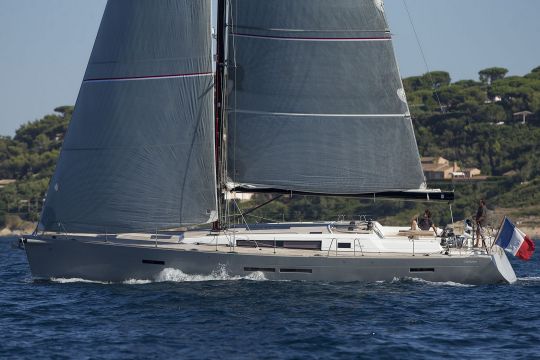
The Pilot Saloon reference
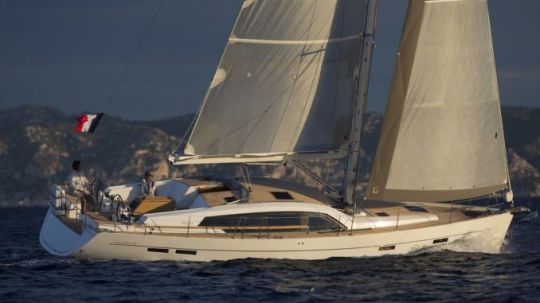
In 1991, the shipyard updated the Scandinavian concept of the deck saloon and launched the Pilot Saloon 60. On an Ed Dubois hull, this luxury 60 surprises by the volumes of its deck saloons and the light brought by this raised roof perfectly integrated into the deck plan. This concept was taken up by several shipyards wishing to offer an alternative to customers seduced by catamarans, but wishing to retain the marine qualities of a monohull.
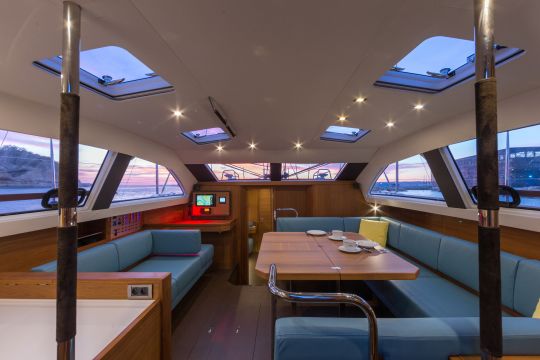
The Pilot Saloon range is today the most requested by the yard's customers.
Luxury craftsmanship
" Wauquiez DNA stands out from the large production sites "Patrick Bloch, the site's operational director, explains. " We try to improve the durability of our yachts as much as possible. We oversize everything that can be oversized. Our hulls are all made of vinylester infusion and balsa sandwich. The fittings and woodwork are machined from solid wood. We meet the needs of a clientele that loves beautiful things. "
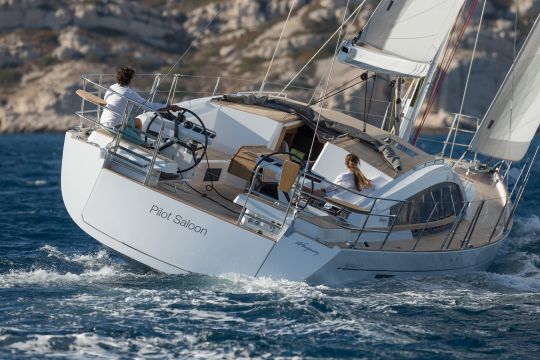
The only shipyard located in the North
The production site, which is based in Neuville-en-Ferrain, near Lille, manufactures a dozen units per year. The production time is about one year, or even more depending on the model. The Wauquiez shipyard is part of the Experton-Revollier group, which is also a shareholder in the shipyards Rhea Marine and Lattitude 46 which produces, among other things, the Tofinou . Many synergies are being developed between the three production sites. In addition, the shipyard's geographical location is a serious asset for exporting to the Nordic countries, which have a strong demand for the quality of the shipyard's production.
Great choice! Your favorites are temporarily saved for this session. Sign in to save them permanently, access them on any device, and receive relevant alerts.
- Sailboat Guide
Pretorien 35
Pretorien 35 is a 35 ′ 0 ″ / 10.7 m monohull sailboat designed by Holman & Pye and built by Wauquiez between 1979 and 1987.

Rig and Sails
Auxilary power, accomodations, calculations.
The theoretical maximum speed that a displacement hull can move efficiently through the water is determined by it's waterline length and displacement. It may be unable to reach this speed if the boat is underpowered or heavily loaded, though it may exceed this speed given enough power. Read more.
Classic hull speed formula:
Hull Speed = 1.34 x √LWL
Max Speed/Length ratio = 8.26 ÷ Displacement/Length ratio .311 Hull Speed = Max Speed/Length ratio x √LWL
Sail Area / Displacement Ratio
A measure of the power of the sails relative to the weight of the boat. The higher the number, the higher the performance, but the harder the boat will be to handle. This ratio is a "non-dimensional" value that facilitates comparisons between boats of different types and sizes. Read more.
SA/D = SA ÷ (D ÷ 64) 2/3
- SA : Sail area in square feet, derived by adding the mainsail area to 100% of the foretriangle area (the lateral area above the deck between the mast and the forestay).
- D : Displacement in pounds.
Ballast / Displacement Ratio
A measure of the stability of a boat's hull that suggests how well a monohull will stand up to its sails. The ballast displacement ratio indicates how much of the weight of a boat is placed for maximum stability against capsizing and is an indicator of stiffness and resistance to capsize.
Ballast / Displacement * 100
Displacement / Length Ratio
A measure of the weight of the boat relative to it's length at the waterline. The higher a boat’s D/L ratio, the more easily it will carry a load and the more comfortable its motion will be. The lower a boat's ratio is, the less power it takes to drive the boat to its nominal hull speed or beyond. Read more.
D/L = (D ÷ 2240) ÷ (0.01 x LWL)³
- D: Displacement of the boat in pounds.
- LWL: Waterline length in feet
Comfort Ratio
This ratio assess how quickly and abruptly a boat’s hull reacts to waves in a significant seaway, these being the elements of a boat’s motion most likely to cause seasickness. Read more.
Comfort ratio = D ÷ (.65 x (.7 LWL + .3 LOA) x Beam 1.33 )
- D: Displacement of the boat in pounds
- LOA: Length overall in feet
- Beam: Width of boat at the widest point in feet
Capsize Screening Formula
This formula attempts to indicate whether a given boat might be too wide and light to readily right itself after being overturned in extreme conditions. Read more.
CSV = Beam ÷ ³√(D / 64)
From BlueWaterBoats.org :
The Pretorien 35 is a French built cruiser-racer from the drawing board of the UK firm Holman & Pye that made its introduction in 1979 and has since been quietly attaining cult status. The trademarks of this classic include huge stowage, capacious accommodations, and seaworthiness all wrapped up with a build quality that rivals that of some of the finest production boats in the world. All in all, the Pretorien 35 today is an excellent example of a go-anywhere cruiser offering excellent value for money.
Built by Chantier Henri Wauquiez in Mouvaux, France, a total of 212 boats were produced between 1970-1986. Many were exported to the United States, so exampled can be found on both sides of the Atlantic.
The boat feels distinctly British, but perhaps this is not so surprising given that Wauquiez, admired English boats and in particular the designs of Kim Holman. He had purchased his first boat in 1964, the English-built and Holman-designed Elizabethan 29, loving her sheerline and her tracking on open water. This lead to his first foray into the boating business by fitting out Elizabethans for the French market.
It was a time when the IOR rule was making a large impact on cruising designs – a high aspect ratio rig, large foresails, small mainsails, and a hull with pinched ends and a wide beam carried aft. The entry is raked while a reverse transom helps deliver a long waterline length of 30’ 4”. The fin keel draws a healthy 6 feet while her large skeg-hung rudder is mounted well aft providing great steering control. Of note is a ballast to displacement ratio of 46%, this is a stiff and powerful boat.
This era of Wauquiez boats were sometimes called French Swans, they are great looking boats with a low slung wedge deck that flows beautifully into her lines. The Pretorien 35’s popularity was no doubt aided by Hal Roth who circumnavigated in Whisper with his wife Margaret well documented in his book How to Sail Around the World .
Construction
The quality of construction of the Pretorien 35 is among the highest found on any production boat and is undoubtedly for ocean sailing. The solid fiberglass hull features six full-length stringers which longitudinally still the boat, they encapsulate the bulkheads which themselves are tabbed into the hull with 18 oz cloth, used for better resin saturation. The overall fiberglass work is very tidy but note that she was built in the days before vinylester resins were used, so osmotic blistering is commonly found below the waterline. This is just cosmetic so unless you’re planning to keep one for a long time, it’s not usually worth repairing.
The deck is balsa cored, with solid fiberglass in regions where through deck fittings were mounted. The deck joint, on an inward flange, is both through-bolted and glassed over. The external ballast keel is mounted on a deep keel stub with 3/4″ stainless-steel bolts.
Helped by her beamy sections, the Pretorien’s interior feels very spacious and compares well to those found in more modern boats. The layout is no nonsense, with a roomy v-berth forward, followed by a head and hanging locker section. The saloon is large with two settees either side of the dinette. Further aft is a spacious galley to starboard with double sinks close to the boat’s centerline, but some will find their depth a tad shallow when the yacht is well healed. Opposite the galley on port is a nav station. There’s a small separate stateroom to the aft on port side which features a smallish double berth. A great deal of storage is found throughout the boat and the joiner work is excellent. Ventilation on the other hand has been found lacking and some owners have installed extra ports and cabin fans.
She’s well balanced and easy to steer. In wind speeds of less than eight knots she’s definitely sluggish. She starts to shine in moderate breezes and when the wind really picks up, her capability to hold onto sail when other boats reef, helps her sail like a much larger yacht. Owners report the boat possesses enough tracking stability to fly spinnakers in high winds without any tendancy to broach which was common for boats of IOR design. Beating to windward you can count on sailing relatively narrow angles of 40 degrees or better.
Hal Roth documents the Pretorien 35’s ability to log 150+ mile days offshore – that’s a very fair number for any cruising sailboat. Through the years she has garnered a reputation for being stable, dry and seakindly. These are all very desirable qualities for offshore passagemaking.
Buyers Notes
Teak decks that were optional on Pretoriens were too thin and many are worn after a few rounds of refinishing, exposing fasteners and flaking caulk. Typically redecking is a large and expensive job, so either look for ones without teak or ones that have had this job completed.
Most Pretoriens have saildrives fitted, in these models closely inspect the drive, particularly the through-hull seal and signs of corrosion in the aluminum.
Pretoriens were built in the days of polyester resin, so keep an eye out for osmotic blistering below the waterline, particularly in earlier models. Note these are only cosmetic but will have impact on the price.
On some boats the headstay fitting installed ex-factory was supported under the deck with only washers instead of a backing plate. Check and remedy as necessary.
The original 23 hp engine found on some boats may be a bit small; the optional 28 hp engine is preferable.
Embed this page on your own website by copying and pasting this code.
Discover Related Sailboats

9 Best Used Sailboats
They may take a little elbow grease and require a few new parts, but here’s a look at nine of the best cruising sailboats that can sail ...

Blue Water Boats
This collection of capable blue water boats features time-tested sailboats with rich histories.

Contessa 32

Tartan 37 (S&S)

Gin Fizz 37

Cavalier 36

- About Sailboat Guide
©2024 Sea Time Tech, LLC
This site is protected by reCAPTCHA and the Google Privacy Policy and Terms of Service apply.

Home > News > Henri Wauquiez: a passionate founder
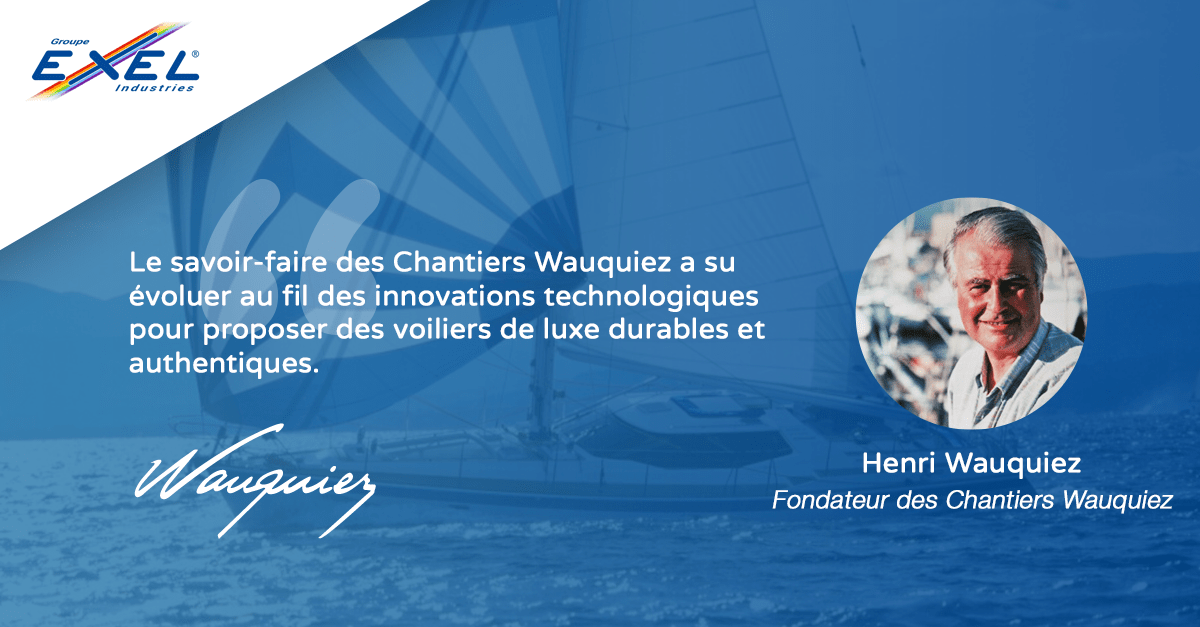
Henri Wauquiez: a passionate founder
On the 30 th of September 2021, Exel Industries announced the acquisition of several shipyards. Among them, a historic company founded by an entrepreneur with a passion for sailing. Who is Henri Wauquiez, the founder of Chantiers Wauquiez?
Henri Wauquiez : the early days of a determined man
Henri Wauquiez was born on the 18 th of February 1934 into a dynasty of tanners established in the North of France. His father, passed on to him from an early age his great passion for entrepreneurship and for work well accomplished.
After completing his secondary education at the Carmes d’Avon school, Henri Wauquiez pursued his education in England at the Northampton Tannery School. He graduated with an engineering degree and an organic chemistry degree.
Then, Henri Wauquiez did his military service in the ALAT (French Army Light Aviation). As a great enthusiast, he took the opportunity to get his pilot’s licence. He was then sent to Algeria in 1955 as a second lieutenant.
Boating: a true passion
Henri Wauquiez has been fascinated by sailing since he was young. Every summer, he cruised along the Mediterranean Coast with his wife Véronique. In 1964, the couple purchased an Elizabethan 29, an 8.8m long sloop-rigged yacht designed by the talented Kim Holman.
Inspired, Henri Wauquiez contacted Kim Holman to work with Webster's shipyards located in the south of England. Indeed, the future entrepreneur wanted to sell the boat to the French market. Throughout the summer, Henri and Véronique Wauquiez passionately introduced their ships and were very successful.
Due to the overwhelming number of orders, Webster's English shipyards were unable to produce all the boats on time. It was at this point that Henri Wauquiez made a decision that would transform his life.
The creation of Chantiers Wauquiez
Henri Wauquiez decided to produce the Elizabethan 29 himself by transforming part of the family tannery into what would eventually become Chantiers Wauquiez.
The architect Kim Holman was so impressed by Henri Wauquiez's meticulous work that he decided to keep on working with him. In 1968, he designed the Centurion 32, a 9.75m long fixed keel sloop-rigged yacht. This emblematic sailboat was produced in 380 units.
Henri Wauquiez made the shipyards a family business when he decided to hire his father, a victim of the crisis in the leather industry. Chantiers Wauquiez kept on growing until it became a real leader in the nautical field, highly appreciated by all sailing enthusiasts.
Chantiers Wauquiez: unmatched manufacturing quality
Since 1965, Chantiers Wauquiez has been providing sailors with high-performance, comfortable and elegant luxury yachts. The passion that drives the Wauquiez team is passed on through the construction of excellent boats, specially designed for those whose lives are driven by the waves.
The expertise of Chantiers Wauquiez has evolved with technological innovations to offer durable and authentic luxury sailboats. The oldest designs are still sought by passionate collectors.
Henri Wauquiez has incorporated his DNA into his company. The names of some of his most famous creations, Centurion, Gladiator or Praetorian, come from the book "Guerre d'Algérie" by Jean Lartéguy, the founder's favourite piece of literature.
In 1985, Henri Wauquiez's talent was officially rewarded by France. French President François Mitterrand decorated the entrepreneur with the National Order of Merit. The company's export success was celebrated, as was Henri Wauquiez's work as president of the Nautical Industries federation.
Exel Industries & Chantiers Wauquiez: a relationship made to last
By deciding to acquire the Wauquiez shipyard in 2021, Exel Industries is affirming its ambition to diversify into the nautical field. Boats have many common features with other activities of the group, thanks to their small series production, their premium equipment and their high level of innovation.
Patrick Ballu, Chairman of the Board of Exel Industries, says he already has several patents in mind in the nautical field. For the group, this is the beginning of a new era, with the aim of relaunching the activity of Chantiers Wauquiez to take full advantage of the company's potential.
The Ballu family also has a great passion for sailing. Vincent Ballu, Patrick Ballu's father, owned two Wauquiez on which the whole family sailed. The current Chairman of the Board even admits to spending more than a month a year at sea and has done so since he was a teenager.
This passion is another element of the Exel Industries' interest in the historic company that is Wauquiez. For the already diversified family-owned group, it is also a way to include an activity related to a different cycle than its usual sectors, with a French expertise.
With this acquisition, Exel Industries hopes to reconnect with the powerful image of Wauquiez while benefiting from the financial strength of the Exel Industries Group to develop the brand.
Find out more about the Wauquiez brand on https://www.wauquiez.com/
Related news
2022-2023 Annual report
First quarter 2023–2024 sales: up 8.1%
2022–2023 full-year results
2022–2023 revenue up 12.0%
Press contact
- HARDI Australia PTY,
- Agrifac Australia PTY LTD,
- Hozelock Australia Pty ,
- SAMES KREMLIN CO., LTD,
- HARDI AGRICULTURAL EQUIPMENT CO., LTD,
- SAMES KREMLIN PRIVATE LIMITED,
- SAMES KREMLIN KK,
- LLC SAMES KREMLIN ,
- Nijni Novgorod
- HOLMER Türkei Otomotiv Limited Sirketi,
- Karatay/ Konya
- SAMES KREMLIN SA,
- Buenos Aires
- SAMES KREMLIN EQUIPAMENTOS DE PULVERIZACAO E EXTRUSO LTDA.,
- ET Works Canada, Ltd,
- SAMES KREMLIN S.A. DE CV,
- SAMES KREMLIN INC. ,
- United States of America,
- HARDI North America Inc. ,
- HOLMER Americas Inc.,
- ET Works, LLC,
- Mooresville
- ET Ag Center,
- ET Works Retails, LLC,
- Kentuky / Indiana / Illinois
- FISCHER Nouvelle sarl,
- HOLMER CZ s.r.o. Tschechien,
- Czech Republic,
- Hradec Králové
- SAMES KREMLIN GmbH,
- HARDI Gmbh,
- Holmer Maschinenbau Gmbh,
- Schierling, OT Eggmühl
- INTEC Sames Kremlin GMBH,
- HARDI INTERNATIONAL AS,
- Nørre Alslev
- L’ Hospitalet De Llobrega (Barcelone)
- ILEMO-HARDI S.A,
- EXEL Industries SA,
- Epernay/Paris
- SUPRAY Technologies SAS,
- PRECICULTURE SAS,
- Fère-Champenoise
- NICOLAS Sprayers SAS,
- GAMA technologies SAS,
- Belleville-En-Beaujolais
- HOLMER EXXACT SAS,
- Noyelles-sur-Escaut
- SAS CAPAGRI,
- Hozelock EXEL,
- SAMES KREMLIN SAS,
- API SCM SAS,
- SAMES Technologies SAS,
- Group HARDI France,
- Beaurainville
- HARDI Service,
- Savigny-le-Temple
- Vitry-Le-François
- TECNOMA SAS,
- BERTHOUD SAS,
- EXXACT Robotics SAS,
- BERTHOUD Sprayers Ltd,
- United Kingdom,
- Boston, Lincolnshire
- Agrifac UK Ltd,
- Cambridgeshire
- Hozelock Ltd,
- Sutton Coldfield
- SAMES KREMLIN SRL,
- Pioltello (Milan)
- AGRIFAC MACHINERY BV,
- Netherlands,
- Hozelock Benelux BV,
- HARDI Norge A/S,
- SAMES KREMLIN sp. z o.o,
- Holmer Budowa Maszyn Sp. z o.o.,
- Środa Śląska
- SAMES KREMLIN, UNIPESSOAL LDA,
- Hozelock Sweden AB,
- DP HOLMER Ukraine,
- Butcha Kiever
- BERTHOUD Sprayers Ukraine,
- BOAT OF THE YEAR
- Newsletters
- Sailboat Reviews
- Boating Safety
- Sailing Totem
- Charter Resources
- Destinations
- Galley Recipes
- Living Aboard
- Sails and Rigging
- Maintenance
- Best Marine Electronics & Technology

Wauquiex Prétorien 35
- By John Caruso
- Updated: January 6, 2003
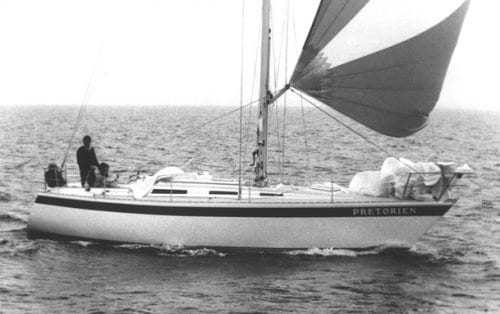
Recognizable by their distinctive blue sheer stripe, the boats produced by Chantiers Wauquiez, founded in 1965 and since 1997 part of the Beneteau Group, are highly regarded both for their sailing performance and for the quality of their construction.
The 35-foot Prétorien (a term that designates a soldier of the emperor’s guard), of which 212 were built between 1979 and 1986, is a Holman & Pye design. The IOR’s influence is visible in its lines and in the high-aspect-ratio mainsail, but the Prétorien doesn’t have the extreme tumblehome or pinched stern that haunt many designs of the era. A 3-ton keel, bolted externally to a deep stub, keeps the boat on its lines when the breeze pipes up, a long waterline ensures good speeds, and the deep, skeg-hung rudder provides excellent control.
Wide side decks, part of the “Euro-design” look of a low cabin trunk merging into a flush deck forward, are clean and safe for moving about. The aft cockpit is snug and comfortable under sail and at anchor, but the placement of winches and the bridgedeck traveler make it difficult to fit a useful dodger.
Varnished teak with a beeswax finish sets the tone below. To starboard is a U-shaped galley with large storage cabinets and lockers, double round (but shallow) sinks, and the Wauquiez trademark: brown ceramic-tile countertops. The nav table to port is large enough to hold a folded chart and is well provided with bookshelves and space for instruments. Aft, on the port side, there’s a cozy double cabin with a hanging locker. Under ample headroom, the main saloon has a large, centerline table, a U-shaped convertible banquette to starboard, and a single sea berth with lee cloth to port. A mirrored, felt-lined liquor locker and a wine cellar under a settee speak to the innate French epicure. Forward on the starboard side is the head, with a roomy hanging locker opposite. The large V-berth is surrounded by useful, accessible storage.
Henri Wauquiez demanded high-quality construction in the boats that bear his name. The Prétorien’s hull is solid fiberglass, laid up with 18-ounce fabric, not 24-ounce, because resin saturation of the lighter cloth is achieved more reliably. Wauquiez laid the deck’s balsa coring in strips with spaces between them and coated these with resin before fitting the alternating strips. Should a leak occur, this detail inhibits water damage.
Because of Henri’s desire to build to Lloyd’s Rules, which, at the time, hadn’t certified any opening portlights, ventilation is marginal, despite three opening hatches, two “UFO” vents forward, and a couple of cowl vents in the saloon. Several owners have installed opening ports. Most of the boats were built with Volvo sail drives, the 28-horsepower MD11C engine pushing the boat along comfortably at 6.5 knots. Many have by now been rebuilt or replaced. I used the Volvo replacement kit for the MD2030C (under $9,000).
Access to the engine compartment is via a couple of panels at the companionway, another in the starboard cockpit locker, and a small hatch in the aft cabin locker.
I surveyed the many owners who participate on the SailNet Wauquiez e-mail list and discovered remarkable loyalty to the marque—the average ownership was nine years, and several had moved up from smaller to larger Wauquiez boats. The Prétorien was never inexpensive and has held its value. Typical asking prices for these classy boats range from $75,000 to $90,000.
John and Lisa Caruso are preparing their Prétorien 35, Andiamo, for a 10-year cruise.
- More: 31 - 40 ft , before 2000 , Coastal Cruising , keelboat , monohull , Sailboat Reviews , Sailboats , wauquiez
- More Sailboats

Meet the Bali 5.8

Celebrating a Classic

New to the Fleet: Italia Yachts 12.98
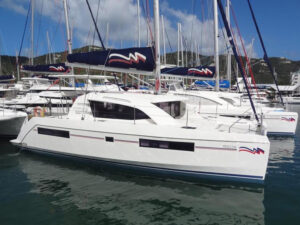
Leopard 40 Prelude Listed For Sale
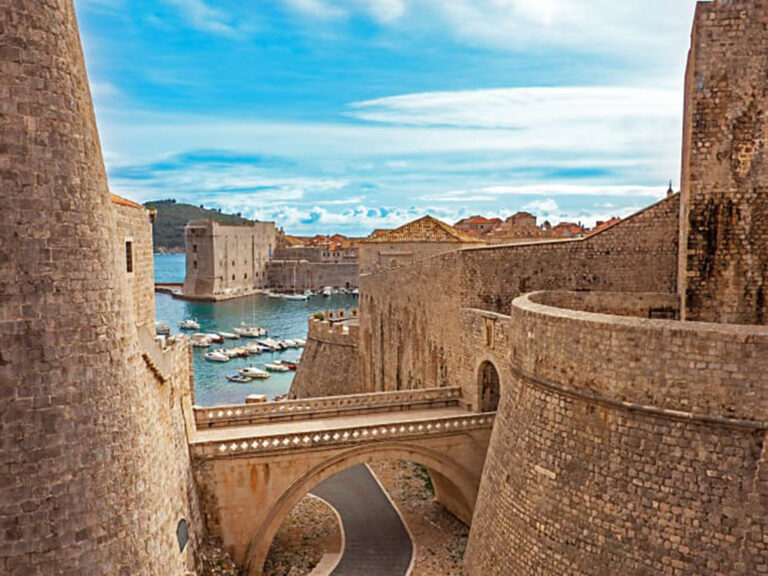
The Moorings Expands in Croatia
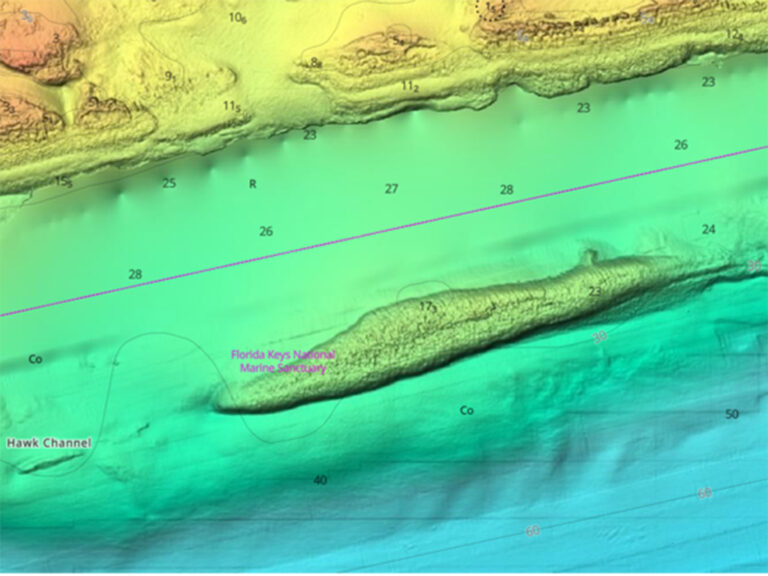
C-Map Updates North America Charts
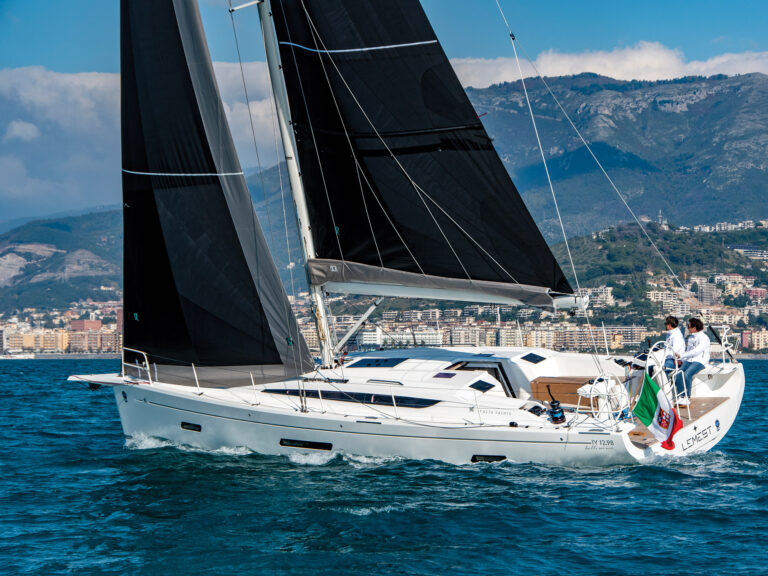
St. Vincent Court Orders Deportation For Hijacking Suspects
- Digital Edition
- Customer Service
- Privacy Policy
- Terms of Use
- Email Newsletters
- Cruising World
- Florida Travel + Life
- Sailing World
- Salt Water Sportsman
- Sport Fishing
- Wakeboarding
Many products featured on this site were editorially chosen. Cruising World may receive financial compensation for products purchased through this site.
Copyright © 2024 Cruising World. A Bonnier LLC Company . All rights reserved. Reproduction in whole or in part without permission is prohibited.
- UNE GRANDE HISTOIRE
- UN SAVOIR FAIRE UNIQUE
- DES BATEAUX ICONIQUES
- WAUQUIEZ 55
- PILOT SALOON 42
- PILOT SALOON 48e
- PILOT SALOON 58
- CENTURION 57
- NOS ACTUALITES
- NOS DISTRIBUTEURS
- VOS VOYAGES

POUR CEUX QUI NAVIGUENT
Wauquiez 55′.
2024 – L’arrivée du tout nouveau Wauquiez 55′
Pilot Saloon 48e
Voilier hauturier grand standing, performant et confortable. Inspiré de la lumière.
Pilot Saloon 58
Un rouf aux arrêtes marquées ; les grands vitrages latéraux du salon de pont.
Centurion 57
Racé, puissant, maniable comme un voilier de course, mais aussi confortable.
Découvrez nos bateaux iconiques
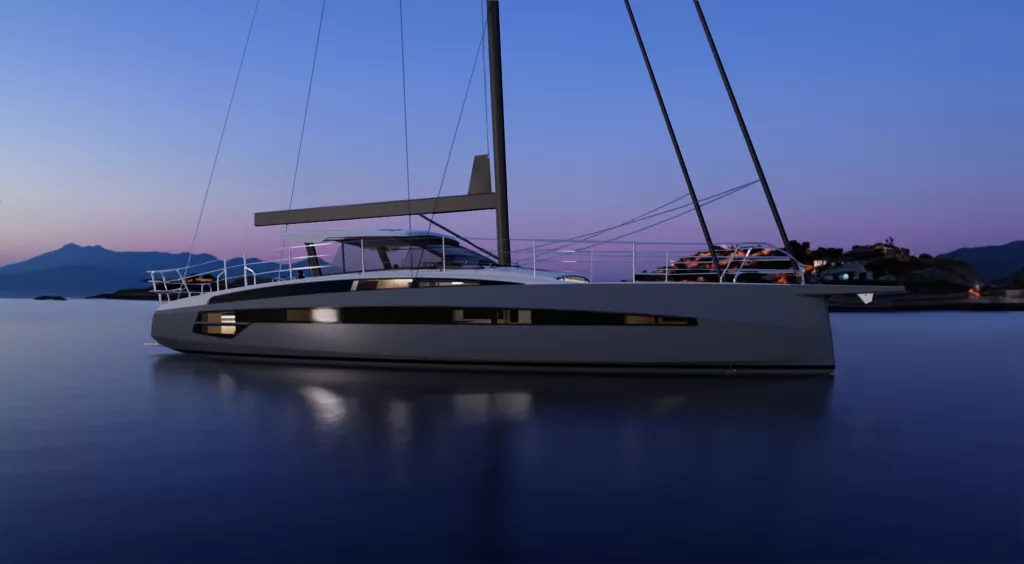
UN SAVOIR FAIRE À LA FRANÇAISE
Créateur d’évasion.
Fabricant voilier luxe hauturier, une vie dédiée à la construction de bateaux hors du commun, telle est la destinée d’Henri Wauquiez, qui donna son nom à notre chantier en 1965…
Les voiliers Wauquiez sont reconnus pour leurs performances exceptionnelles en mer. Grâce à leur conception innovante et à l’utilisation de matériaux de haute qualité, ces voiliers sont capables de naviguer avec rapidité et agilité, offrant ainsi des sensations de navigation uniques. Que vous soyez un marin expérimenté ou un plaisancier passionné, les voiliers Wauquiez vous permettront de profiter pleinement de la beauté de la navigation à voile.
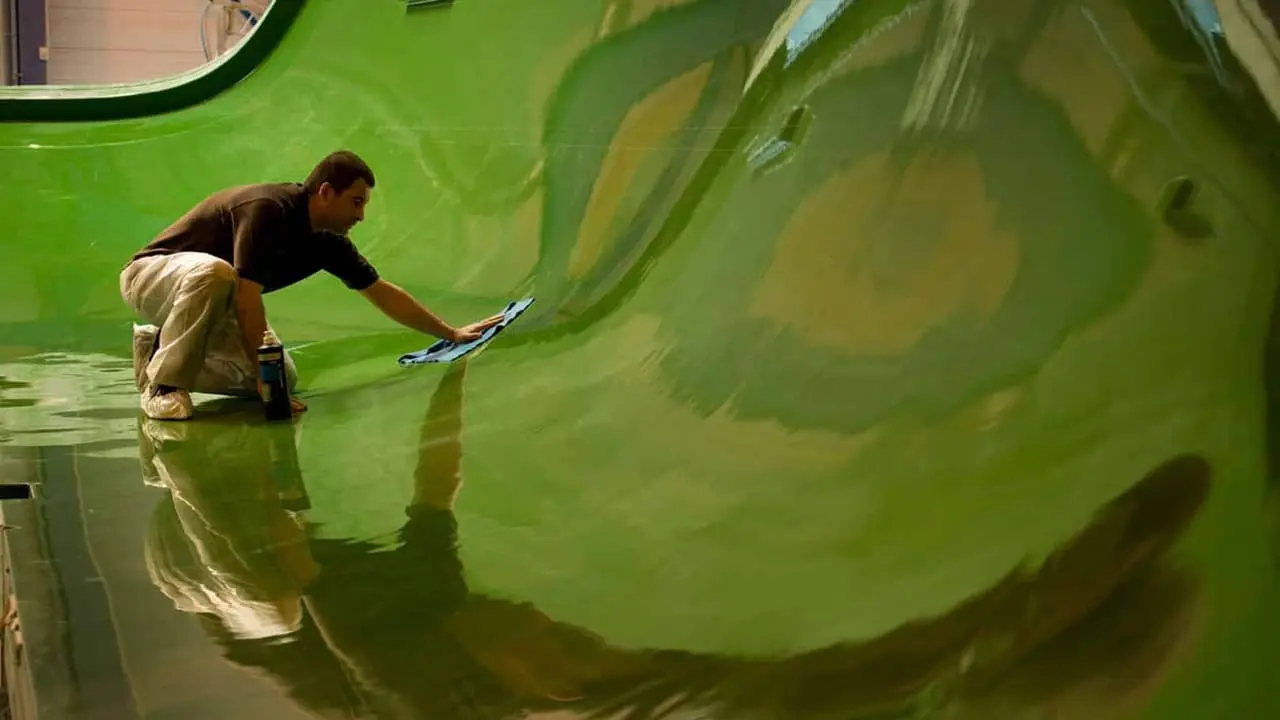
“Votre passion pour les voiliers d’exception anime la nôtre : Celle de vous les fabriquer”
Cyril Ballu, directeur général.
Fabricant voilier luxe hauturier, nos bateaux ont une âme.
Notre chantier naval français produit des voiliers d’excellence authentiques, qui évoluent continuellement au gré des innovations technologiques.
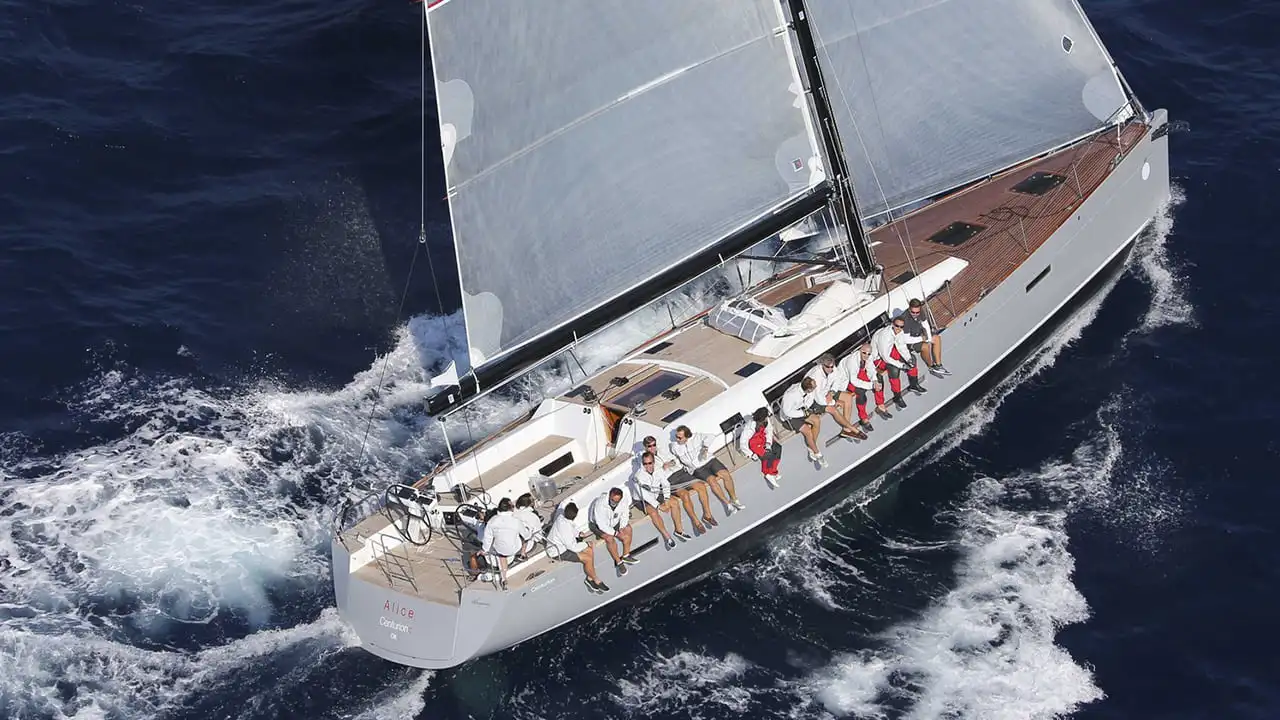
DECOUVREZ NOS MODÈLES EN VIDÉO
Wauquiez est une marque emblématique dans le monde de la voile de luxe, connue pour la qualité de ses voiliers et son expertise dans la fabrication de bateaux de plaisance haut de gamme. Depuis plus de 50 ans, Wauquiez conçoit et fabrique des voiliers de luxe qui allient élégance, performance et confort en mer. Que vous soyez un passionné de voile expérimenté ou un amateur exigeant, les voiliers Wauquiez sont conçus pour répondre à vos besoins et vous offrir une expérience de navigation exceptionnelle.
Fabricant voilier luxe hauturier – NOS ACTUALITES
Les dernières nouvelles.
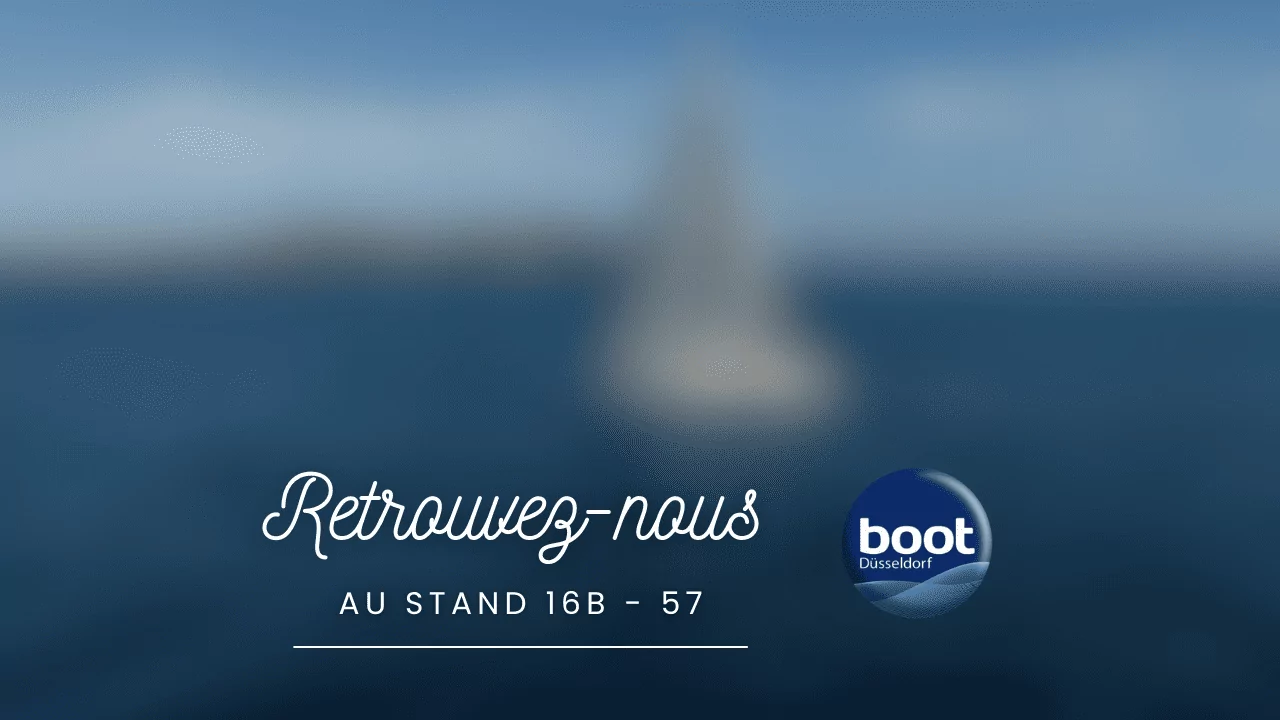
Rendez-vous au Boot de Düsseldorf

Un nouveau chapitre dans l’histoire de Wauquiez

En exclusivité, découvrez le nouveau Wauquiez 55’ ; la navigation revisitée.
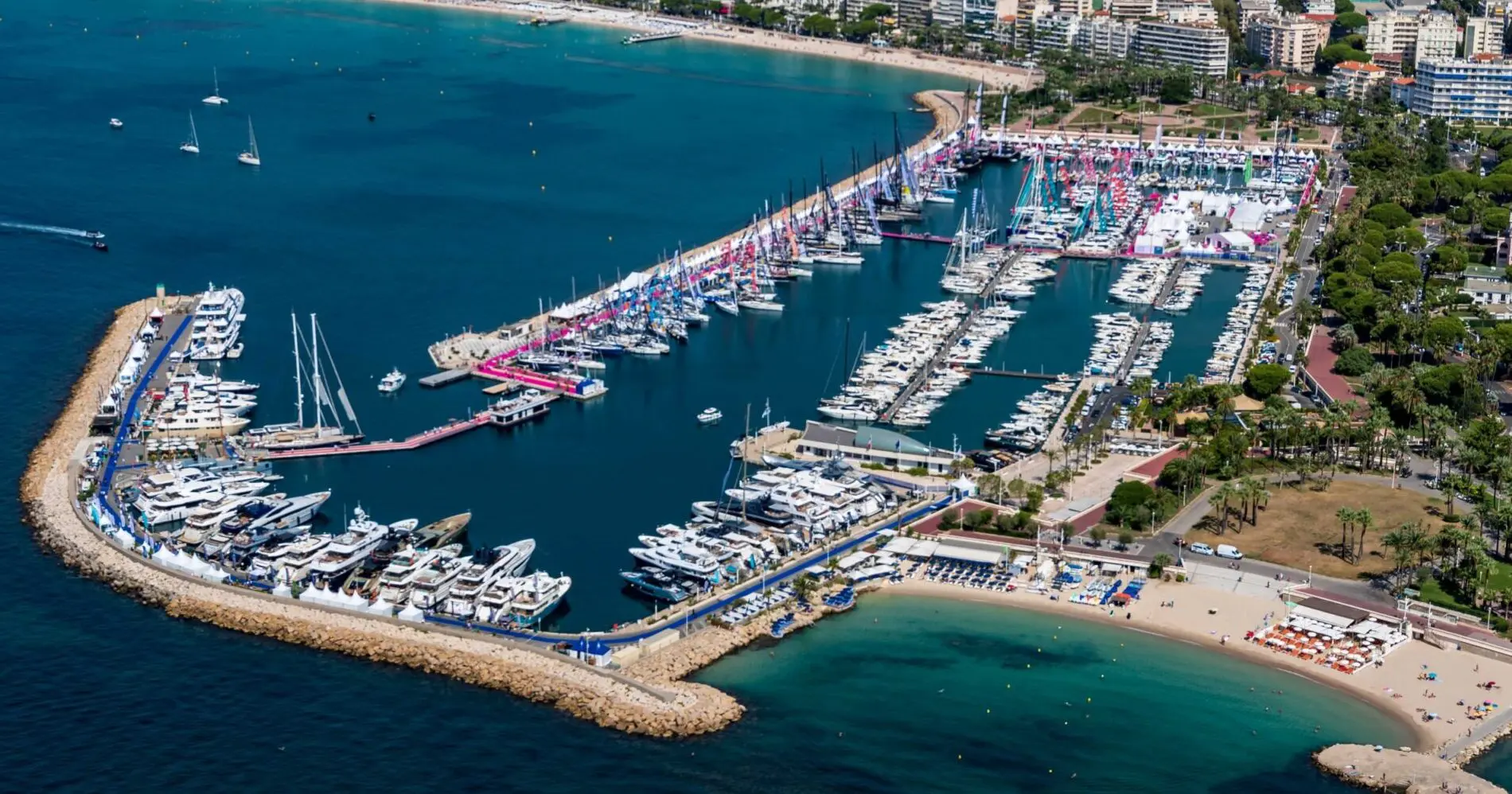
Cannes 2023 : Wauquiez, l’art de La navigation de luxe
Naviguer dans l’actualite wauquiez, newsletter wauquiez, langue de communication *.
J’ai lu et j’accepte les conditions de la Politique de confidentialité de Wauquiez.

Wauquiez 33
The wauquiez 33 is a 33.0ft masthead sloop designed by holman & pye and built in fiberglass by wauquiez, henri (chantier) since 1973..
The Wauquiez 33 is a moderate weight sailboat which is a reasonably good performer. It is very stable / stiff and has a good righting capability if capsized. It is best suited as a coastal cruiser. The fuel capacity is originally very small. There is a short water supply range.
Wauquiez 33 for sale elsewhere on the web:

Main features
Login or register to personnalize this screen.
You will be able to pin external links of your choice.

See how Sailboatlab works in video

We help you build your own hydraulic steering system - Lecomble & Schmitt
Accommodations
Builder data, modal title.
The content of your modal.
Personalize your sailboat data sheet
- New Sailboats
- Sailboats 21-30ft
- Sailboats 31-35ft
- Sailboats 36-40ft
- Sailboats Over 40ft
- Sailboats Under 21feet
- used_sailboats
- Apps and Computer Programs
- Communications
- Fishfinders
- Handheld Electronics
- Plotters MFDS Rradar
- Wind, Speed & Depth Instruments
- Anchoring Mooring
- Running Rigging
- Sails Canvas
- Standing Rigging
- Diesel Engines
- Off Grid Energy
- Cleaning Waxing
- DIY Projects
- Repair, Tools & Materials
- Spare Parts
- Tools & Gadgets
- Cabin Comfort
- Ventilation
- Footwear Apparel
- Foul Weather Gear
- Mailport & PS Advisor
- Inside Practical Sailor Blog
- Activate My Web Access
- Reset Password
- Pay My Bill
- Customer Service

- Free Newsletter
- Give a Gift

How to Sell Your Boat

Cal 2-46: A Venerable Lapworth Design Brought Up to Date

Rhumb Lines: Show Highlights from Annapolis


Open Transom Pros and Cons

Leaping Into Lithium

The Importance of Sea State in Weather Planning

Do-it-yourself Electrical System Survey and Inspection

Install a Standalone Sounder Without Drilling

Rethinking MOB Prevention

Top-notch Wind Indicators

The Everlasting Multihull Trampoline

In Search of the Snag-free Clew

What’s Involved in Setting Up a Lithium Battery System?

Reducing Engine Room Noise

Breaking Point: What Can Go Wrong With Your Yanmar?

Mildew-resistant Caulks for Boats

Can We Trust Plastic Boat Parts?

Repairing Molded Plastics

Mailport: Marine plywood, fuel additives, through bolt options, winch handle holders

The Day Sailor’s First-Aid Kit

Choosing and Securing Seat Cushions

Cockpit Drains on Race Boats

Rhumb Lines: Livin’ the Wharf Rat Life

Resurrecting Slippery Boat Shoes

Shoe Goo’s Gift to Sailors

Tricks and Tips to Forming Do-it-yourself Rigging Terminals

Marine Toilet Maintenance Tips

Learning to Live with Plastic Boat Bits

The Ultimate Guide to Caring for Clear Plastic
- Sailboat Reviews
Wauquiez Pretorien 35
This well-made french cruiser has a fairly contemporary underbody and is strong enough to venture offshore. finding one is the problem..
Though out of production since 1987, this French cruiser receives high marks from owners who appreciate high quality construction, comfortable accommodations belowdecks, and a seakindly motion. It stands in stark contrast to the rounded, modern designs and flashy interiors currently produced by French manufacturers.
The Company Chantier Henri Wauquiez, of Lille, France, was formed and commenced producing boats in the 1960’s, when Henry Wauquiez became so enamored with the sailing characteristics of his personal sailboat, the Holman and Pye-designed Elizabethan 29, that he received a license to produce the boat in France.
Within a year, the boat became popular in France and established the firm’s reputation as a builder of solid, fast cruising boats. In ensuing years, Wauquiez commissioned Holman-Pye to design the Victorian 28, which competed successfully in the quarter ton world championships, and several cruising sloops ranging in size from 32-47 feet, including the Pretorien 35, built between 1979 and 1986. Other designs included the Chance 37, which dominated the European production boat racing circuit from 1972-75, and the Wauquiez Hood 38, which was designed by Ted Hood. That boat was later produced in the United States as the Ted Hood Little Harbor 38 (Hood’s personal boat Robin) and the Bristol 38; American versions typically had the same underbody but different deck configurations. Others included the 33′ Gladiateur and 43′ Amphitrite.
Like many yards of this vintage, Wauquiez experienced financial difficulties tied to foreign exchange rates, national politics that affected the French economy, and competition from lower-priced competitors. The company thrived from 1965-1982, when it went into receivership. It emerged from bankruptcy in 1983 and produced 200 boats from 1982-87, many of which were sold in the US. When the dollar plummeted in 1988 the US market evaporated, and the company refocused its efforts on domestic production and sales to charter fleets in the Mediterranean.
Wauquiez brought in Olivier Prouvost as a financial partner in 1987, but the union was not a happy one. Wauquiez eventually left the company. Prouvost operated the company until 1997, when he sold it to Beneteau. With favorable foreign exchange rates again a reality, the company has made a renewed commitment to selling new boats in the United States. At this writing, Discovery Yachts of Seattle holds the only dealership in the US. The market for used Pretoriens has remained strong throughout the uncertain economic times.
Design The profile of the Pretorien 35, like most of the company’s designs, is similar to that seen in Baltic, Swan and Sweden yachts. We think the boat is stylishly traditional. The fine entry is not as radical as the current Farr designs, for example, but its flush decks and flowing sheerline present a fine shape, and the interior is brightened by light colored woods, ports and hatches.
Yacht designer Mark Mills, a specialist in the design of performance yachts, comments that, “The boat shares characteristics of many early-80’s designs when IOR design dominated the cruiser/racer market, as represented by the somewhat pinched stern section and large-foretriangle masthead rig. The external keel contains a reassuring volume of lead, and the 46% ballast ratio will produce a stiffer, more seakindly ride. Though not overly heavy, the D/L (displacement/length) ratio of 225 fits the displacement profile of a traditional cruiser perfectly and promises significant interior volume. It is a well-built, solid cruiser with undemanding ways.”
Construction Wauquiez constructs solid fiberglass hulls, laid up by hand, that consist of several layers of bi-directional fiberglass. Six longitudinal stiffeners that run the entire length of the boat are glassed in and integrated to fiberglass beams running athwartships that provide additional structural integrity. Bulkheads are bonded to the hull and deck. The bonds are reinforced by a technique not often seen on other boats: Holes are drilled in the bulkhead to allow additional fiberglass strips to run from the hull through the holes to the hull on the opposite side of the bulkhead. (Shannon is another company that uses this method.)
The Pretorien was built prior to the use of vinylester resins (proven superior to polyester for preventing blistering) for the outer laminations, and one owner reported minor blistering problems. As with any older used boat, we suggest a thorough bottom evaluation.
The modified fin keel—6,000 lbs. of lead—is fitted to a keel stub, and bolted to the hull with 3/4″ stainless bolts and two nuts on each. The rudder is attached to a skeg running aft from the keel, and mounted on a stainless steel bearing assembly. Because the rudder is well aft, and deep, it provides solid steering power in heavy seas and winds.
The deck is balsa cored, which was unusual for European boats of this vintage, except in areas where hardware is to be attached, where it is solid fiberglass. The hull/deck joint is a flanged arrangement that is glassed over and reinforced by stainless steel fasteners. The toe rail and stanchion bases are also fastened through this joint.
The engine compartment is well insulated from the sounds of the 23-hp. or 28-hp. Volvo diesels that were original equipment. One owner commented that the 23-hp. engine moves the boat at 6 knots in calm waters, but slows dramatically in wind or current, so the larger engine may be the preferred powerplant.
The boat is designed to be equipped with a saildrive, and several owners described problems with electrolysis of the aluminum underwater unit. One owner told us that his engine was improperly bonded to the ground system. Another said the AC electrical system was bonded to the ground. Any such installation should be examined thoroughly to avoid potential problems. Many owners change the zinc at six-month intervals, or have divers inspect the unit every 90 days.
Some boats were imported with a conventional drive shaft. However, this reportedly resulted in dramatically angled propeller shafts, which aren’t very efficient. The saildrive, by comparison, provides perfectly horizontal thrust.
We don’t like the position of the batteries, which are located beneath the port quarterberth, because they take up handy storage space and are located too far aft. However, owners told us that the additional weight to port was offset by gear stored in the starboard lazarette.
Each boat produced in the Wauquiez factory undergoes a water test prior to shipment. Boats are launched in a pond and undergo 24 hours of continuous spraying by water hoses to assure they are leakproof.
Deck Layout The cockpit measures 85″ long and 62″ wide at the narrowest point in the stern. Seats are 18″ wide and provide good leg support, but the footwell is narrow at 18″ wide.
One owner told us that the forward location of the Lewmar 46 self-tailing primary winches near the companionway prevented easy sheeting following the installation of a dodger. (This is a commonproblem when a dodger is added.) He moved the winches aft 12″. This also made them more accessible from the steering station
Boats were equipped with wheel steering and a destroyer-style wheel and pedestal with room for a basic instrument package—wind speed, boat speed and depth.
The top of the rudder post is located atop the stern coaming, which facilitates easy attachment of an emergency tiller, which is secured to the hull in a lazarette.
Lazarettes, which are all vented to prevent odors and mildew, are to starboard and in the aft end of the cockpit. The three lazarettes to starboard can be combined to create a space large enough for a life raft. One section is separated by a partial bulkhead that one owner extended vertically to provide a mounting area for a heater. Interestingly, the lazarettes all have the same fine surfaces as the rest of the boat, and have been coated with an epoxy-like material.
The propane tank is in the aft compartment and should be carefully inspected, because boats came from the factory with copper tubing that should be replaced with USCG-approved hoses. Access to the steering quadrant, a beefy stainless steel unit, is via the aft compartment. The fuel tank is below the pedestal.
Wide decks allow easy movement forward, and double lifelines with gates on both sides of the boat are standard equipment. However, the coachroof is so low that it’s a stretch to reach handrails. On the boat we examined, we were impressed that the stainless steel stanchions and other fittings, some more than 13 years old, showed no sign of rust.
Standard equipment included Lewmar 8, 16, and 24 two-speed winches on the mast for the main, jib and spinnaker halyards, and reefing lines. All of the running rigging is inside the mast and booms. Standing rigging includes four pair of shrouds to support the double-spreader mast, a baby stay, and running backstays. One owner said he needed the baby stay to keep the mast from pumping in a breeze.
The anchor locker at the bow is adequate for the storage of 25′ of 5/8″ chain and 500′ of nylon rode. Most boats are equipped with 30- to 35-lb. anchors. Two owners extended the cheeks on the bow roller to prevent their plow anchors from banging against the hull.
Belowdecks Everyone with whom we spoke commented favorably on the boat’s space, quality joinery and finish, and light belowdecks. After inspecting the boat, we agree.
The boat has 6′ 3″ of standing headroom in the saloon, and 6′ 2″ in the forepeak.
All of the wooden surfaces are cherry, which is lighter to the eye than teak or mahogany. With three windows on each side of the cabin, and a 24″ hatch amidships, the space was well-lit on the gray, midwinter morning we did our inspection. Two East Coast owners commented on the need for additional fresh air ventilation and improved circulation. They installed electric fans.
The overhead liner provides an air gap. Wooden covers screwed into the overhead allow access to wiring runs. One owner commented that these covers may need occasional re-fastening because they are prone to dislodging.
As with most aft-cockpit boats, the engine is mounted below the companionway steps, and is easily accessible from the front. Additional access to starboard is via the starboard lazarette, or through a small opening in the port stateroom.
The aft stateroom, which has a hard door, has a wood ceiling and is ventilated by a portlight in the cockpit footwell. A double berth measuring 76″ x 50″ provides space for two average-sized adults. There is a hanging locker, which in some boats also is equipped with a small sink. The space may prove cozy for two adults on an extended passage, but will certainly meet the needs of most casual cruisers, especially those traveling with children.
The nav station is to port, opposite the galley, and the subject of one owner complaint. The table is about 42″ wide and 26″ deep with a shallow storage area, a bit smallish for plotting tools on full-sized charts. There are two shelves for logs and books, and room for instruments on the station’s bulkhead. Finding room for a large CRT or LCD monitor without reorganizing the space would be challenging. There is additional storage below the nav seat and in drawers below the chart table.
Opposite the nav station is the galley, which, like the nav station, comes under criticism for its lack of handholds. The entire space belowdecks is wide open and the only handholds are rails mounted on the overhead. Movement fore and aft might be a bit dicey in rough weather.
The galley is U-shaped, 56″ deep by 46″ wide, the counter of which is accented by ceramic tiles, a Wauquiez trademark. It is equipped with a double stainless steel sink, a gimbaled two burner stove, a 20″ deep dry locker and ice box.
For a 35-footer, the galley has excellent stowage. The area below the sink is large enough for two waste baskets plus cleaning supplies. There’s a plastic tray below the stove that is adequate for some cookery as well as enclosed stowage for dishware behind the stove. A fourth compartment is below the icebox. The icebox measures 43″ by 11″ and is 33″ deep. Insulation is just 2″-3″ thick and may suffer from its close proximity to the engine compartment. One owner covers stores with a thermostatic pad to reduce melting and another removed the box and replaced it with a more substantially insulated smaller unit.
One of the most interesting touches is an opening in the bulkhead behind the icebox that leads to the starboard lazarette. Designed as additional space for foul weather gear, the space has a fresh air vent, or could be warmed by engine heat. This seems a good idea, though the down side is that the gear must be dragged across the icebox.
The saloon has two comfortable places to relax, eat, or sleep. The starboard settee is U-Shaped and houses a double leaf table that provides seating for four to six adults. Additional seating to port is on a second settee 60″ long, which incorporates a 16″ footwell under the nav station for sleeping. The cushion is 25″ wide at its narrowest point and is equipped with a lee cloth.
Several owners complained that the dining table intrudes into the fore and aft passageway, and extends over the settee cushions, requiring some acrobatics to reach the outboard seats. One went so far as to replace the original table with a narrower table. The starboard settee converts to a double berth 78″ long and 48″ wide. There is stowage behind the settees.
Two 33-gallon water tanks are beneath the settees, a plus that puts weight low and amidships.
Both sides of the hull are lined with shelving and stowage areas, one with a wine locker with a wicker door.
The head is to starboard, with doors to both the saloon and forward stateroom. It has hot and cold pressure water faucets, a built-in handheld shower head and Par toilet, all in a compartment marginally large enough for one adult. Stowage is in a large, two door medicine cabinet, and below the sink in an area filled with pipes, hoses and seacocks.
Forward of the saloon is a hanging locker to port and the master stateroom enclosed by a solid wood door. The V-berth, which is 81″ wide and 80″ long, takes up most of the space, though there are shelves and reading lights are on both sides. A hatch provides fresh air ventilation. Overnight cruisers described the space as being comfortable.
Wiring and Plumbing Except for the exceptions noted above, we like the mechanical systems on this boat. We did, however, find a wiring run in a loom cut through a bulkhead hole that had chafed. We were impressed with the finish of all hidden spaces.
All hoses were double clamped, and bronze seacocks and manifolds are used on all through-hulls.
Performance In an attempt to determine the sailing characteristics, we talked with several present and former owners of Pretorien 35’s and were surprised that their comments fell within a very narrow range. Depending on the sail inventory, the boat needs 6-8 knots of breeze to sail quickly. This is not surprising considering its 15.6 sail area/displacement ratio.
One racer told us that his inventory included only a 135% genoa and that in less than 10-12 knots of wind, performance was dismal. A second owner who participates in Wednesday night fleet racing said that the boat sails to its handicap with 8 knots of breeze and a 150% genoa. In all cases, sailors were using traditional Dacron fabrics; we’d bet that light air performance could be enhanced by lighter, finely tuned laminate sails.
On the other hand, skippers said the boat is dry going to weather in 30 knots of wind. All agreed that the boat points higher than similar 35-foot cruisers. One racer said he sails to within 40° of true wind direction.
Sam Stitt, who cruises his boat in the Northwest, said that the boat is easily balanced on all points of sail, but mentioned that an Autohelm 4000 was inadequate for sailing wing and wing in more than 20 knots of wind because of its slow response time. He purchased the Pretorien after considering a J-36 and Express 37, primarily because it is fast enough for his needs, and more comfortable.
“The boat steers better, with less effort, and more predictably, than any comparably sized boat I have driven. I think that this is one of its most important features, beyond all of the obvious quality and finish attributes,” Stitt said.
A similar sentiment was expressed by Fred Hess, who raced his boat in the single-handed TransPac in 1996. He replaced the Autohelm with a sturdier Alpha autopilot, which he said responded more quickly.
During his 2,000 mile, 14-day passage from San Francisco to Hawaii, Hess said he spent most of his time in the cockpit sunbathing and reading cheap novels while the autopilot and Monitor windvane steered. He described the boat’s motion as ‘seakindly,’ and said that in 12- to 35-knot winds the boat was a sleigh. Sailing with tri-radial and asymmetrical spinnakers, he experienced neither spinouts or round downs. During a race from San Francisco to Santa Barbara, he sailed comfortably with the tri-radial in 45-knot winds.
Conclusions So, why aren’t more Wauquiez boats plying American waters?
“It’s a matter of economics,” said John Carson of Seattle, who was the leading dealer in the world during the mid-1980’s. “When the dollar plummeted, the price of the boats increased so dramatically they became unaffordable compared to American production boats, or we would still be selling them. I’d go anywhere in one of Henri Wauquiez’ boats.”
We agree with Carson’s assessment. Though BUC Used Boat Price Guide lists prices between about $65,000 and $75,000, the two we found for sale on the West Coast were asking close to $90,000, and one on the East Coast was asking $77,000. Though pricey for a used 35-footer, we think the boat has a lot to recommend it, especially if the bottom survives a careful survey, and if outfitted with new generation electronics and a good sail inventory.
RELATED ARTICLES MORE FROM AUTHOR
My son purchased a Wauquiez Pretorien (Desolina)in January 2022, after a long refit we sailed it from Falmouth to Southampton on the UK south coast, which will be the home port, in October 2022. The voyage was 189 nautical miles which we completed 30 hours. Strong winds from aft F5/6 with prolonged periods of F7/8. The boat gave us full confidence in testing conditions.
LEAVE A REPLY Cancel reply
Log in to leave a comment
Latest Videos
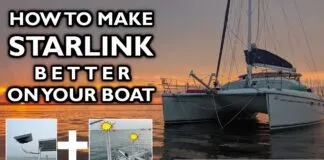
How To Make Starlink Better On Your Boat | Interview

Catalina 380: What You Should Know | Boat Review
- Privacy Policy
- Do Not Sell My Personal Information
- Online Account Activation
- Privacy Manager
- Tous nos bateaux
- How to sell your boat ?
- Our services
- Vente d’un bateau français à un français
- Vente à un client étranger
- Vente d’un bateau étranger à un français
- Customer reviews

THE WAUQUIEZ SHIPYARD: A HISTORY OF PASSION SINCE 1965
- 18 April 2023
- history of the construction sites , Wauquiez
From military service to boat building: the creation of the Wauquiez shipyard
The founder of the Wauquiez shipyard is Henri Wauquiez. In addition to his degree in organic chemistry and engineering, Henri obtained his pilot’s license during his military service in the ALATE (Aviation Légère de l’Armée de Terre) .
He also discovered his passion for sailing at an early age. One day, he decided to use part of the family tannery to build boats. His goal was to produce top of the line sailing boats. The very first Elizabethan 29 model left the yard in 1965. The boat was built in 30 copies. The Elizabethans are so well made that their architect Kim Holman decides to design other models exclusively for the shipyard. In particular, the first Centurion , famous throughout the world, were born from this collaboration.
The Wauquierez models: A history of shipbuilding since the foundation of the shipyard
Following the commercial success of the Elizabethan 29 , the yard launched a larger model – the Elizabethan 35 . From 1966, 15 examples were built.
Between 1966 and 1968, 52 of the fabulous Victorian were built.
The Centurion 32 is the emblematic boat of the Wauquiez shipyard. In particular, this model really reinforces the reputation of the shipyard. Robust and easy to handle, 380 boats were built between 1968 and 1977.
The other models that were very successful at Wauquiez are :
- The Chance 37 was built in 95 units between 1973 and 1977
- The largest and most luxurious boat, launched in 1975 is the Amphitrite
- The Amphora was built in 96 units between 1976 and 1981
- The Gladiator was built in 299 units from 1977 to 1986
- The only dinghy of the yard – Hood 38
- The Pretorien (1979) benefits from all the expertise acquired by the shipyard, in the line of the Centurion and the Gladiator
- The Antigua 34 is a sailboat with a deck saloon offering exceptional visibility, not found in any other shipyard. It was produced in 19 copies between 1980 and 1983.
- The Antigua 37, built in 17 copies between 1981 and 1982
- The Centurion 47 (1984)
- The Centurion 42 (1985)
- The Centurion 38 (1987)
- The Centurion 40 is built in 33 copies between 1988 and 1993
- The Centurion 59, 45 and 49 (1990)
- The Centurion 61S and the Kronos 45 catamaran
- The Pilot Saloon 54 (1993)
- The Centurion 41S (1994)
- The Centurion 37 S and 48S liveaboard monohull (1996)
- The Pilot Saloon 48 (1997)
- The Pilot Saloon 43 (1999)
- The Pilot Saloon 40 (2000)
- The Pilot Saloon 40S (2002)
- The racing-cruising monohull Opium 39
- The Centurion 57 (2014) marks the return of the legendary “Centurion” line
- The Optio monohull (2014)
- The Pilot Saloon 48 (2022)
Indeed, Henri’s choice to name his boats Centurion, Gladiator and Praetorian is not only interesting, but also very significant. Being a great admirer of Jean Lartéguy’s literary work “Guerre d’Algérie”, which includes the titles “Les Centurions” (Volume 1) and “Les Prétoriens” (Volume 2), Henri wanted to pay tribute to this epic saga by using these names for his boats.
Tradition and innovation: Wauquiez sailboat ranges today
Today, the Wauquiez shipyard continues to offer top-of-the-range ranges of sailing boats, combining tradition and innovation to offer high-performance and elegant boats, whether for cruising or racing. These are :
- Pilot Saloon 42
- Pilot Saloon 48e
- Pilot Saloon 58
- Centurion 57
Wauquiez’s most sought-after pre-owned sailboats
The most sought-after used models at Wauquiez are generally boats from the Centurion line. It features high-end cruising sailboats. Some of the most popular models include:
- Wauquiez Centurion 32
- Centurion 36
- Centurion 40
- Centurion 45s
- Centurion 47
These yachts are very popular on the second-hand market because of their quality of construction, their complete equipment and their excellent sea-keeping.
The Wauquiez Pilot range is ideal for single-handed or short-handed sailing. Among the most sought-after used models are :
- Wauquiez Pilot Saloon 40
- Pilot Saloon 47
- Pilot Saloon 55
These robust boats offer exceptional comfort on board thanks to their spacious and luxurious layout, as well as their complete equipment for sailing on the high seas.
Find all our used Wauquiez boats.
If you own a Wauquiez sailboat and you want to estimate the price, contact us now . You will get an accurate and fair estimate of the value of your boat for free!
Ask for an estimate of your boat, it’s free!
Category of boat * Bateau à moteur Voilier Catamaran Autre
Engine make *
Home port *
Your e-mail
Related Posts

GREENLINE: THE PIONEER OF HYBRID PROPULSION, REVOLUTIONIZING NAVIGATION
- 12 June 2023
- Greenline , histoire des chantiers , history of the construction sites

The living legend
A boat for life .
In 1965, Henri Wauquiez, Yachting addict, built up the first Wauquiez, writing there the first page of the Wauquiez history, which is today more than ever, based on an exceptionnal craftman ship, the attention to the detail and the respect of the state of the heart. It results into comfortable, secure and fast boats which, are still actively chassed by second hand buyers .
The first Elizabethan and Pretorien have been replaced by the magnificent Centurion and Pilot Saloon range and the same passion still drives the entire Wauquiez team: making every new sailboat an example of excellence.
Wauquiez Pilot Saloon 42 video
Wauquiez’s shipyard, in Neuville en Ferrain, close to Lille (North of France). A lifetime devoted to building extraordinary boats, that was the destiny of Henri Wauquiez, who gave his name to our workshop in 1965. Since then, Wauquiez has not chosen the path towards industrialisation.
We prefer to let our know-how flow freely by offering you original, authentic excellence boats., world cruising sailboats that are safe, performing and comfortable for all those whose lives are marked by a passion for the sea, world cruises.
The structure of a Wauquiez consists of a floorage (monobloc on some models) glued and laminated to the hull, as the bulkheads are. The keel is fixed by stainless steel bolts and a perfect rigging tension and appendages strength distribution is ensured by their total integration to the structure of the boat.
Hull construction:
The hull is molded with the utmost care, using bisphenol resins for the outer layers, to ensure a healthy and very long life to your boat. Today, Wauquiez also uses the infusion technique which, beyond the protection of the environment, guarantees an optimal resin / fiber ratio, exceptional rigidity (balsa sandwich) as well as an important weight gain.
Deck construction
The deck is also made of balsa sandwich, for excellent rigidity, and perfect sound and heat insulation; This appreciable weight gain “in the highs”, adds to the stability of your Wauquiez. The hull / deck junction, is made by a polyurethane bonding and a mechanical connection. Finally, if you have chosen a teak deck, it is nice to know that it is laid wood batten by wood batten, in the tradition of high-end sailboats.
There is rarely a hardware and rigging more carefully choosen than on a Wauquiez: only the best global brands are retained. But beyond the quality of the equipment, this choice is also for you the guarantee of an excellent service at all your stops, on all the globe seas.
Wood work :
It is undoubtedly inside a Wauquiez that the love of the job well done, which animates the cabinetmakers of the shipyard, is the most obvious.
The furniture and bulkheads are varnished and adjusted with remarkable care, to the delight of the eyes and the touch! The natural lighting of the panels and portholes, as well as the warm light of the lighting, both create an inimitable atmosphere, highlighting the exceptional finish of the woodwork of each Wauquiez sailboat.
Discover the Wauquiez range
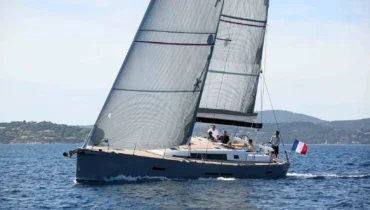
Centurion 57′
- Longueur 17,70
- Largeur 4,95
- Moteur Yanmar 100 CV
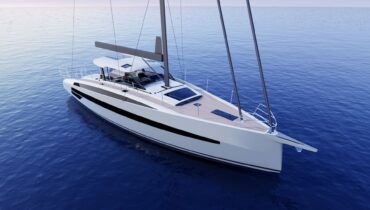
Wauquiez 55
- Longueur 16,40
- Largeur 5,25
- Moteur 2x50 ou 2x75 cv
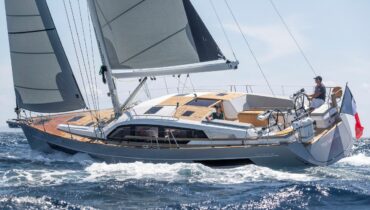
Wauquiez Pilot Saloon 48e
- Longueur 14,77
- Largeur 4,61
- Moteur Yanmar Saildrive 110 CV
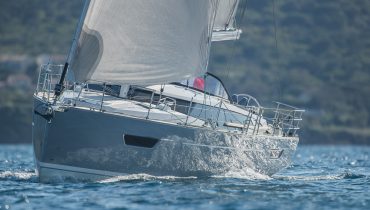
Wauquiez Pilot Saloon 42
- Longueur 12.99
- Largeur 4.34
- Moteur Yanmar Saildrive 57 CV
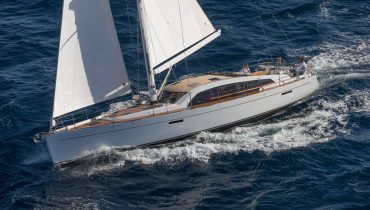
Wauquiez Pilot Saloon 58
- Longueur 17.70
- Largeur 4.95
Wauquiez top-of-the-range sailboat
Discover the range.
This post is also available in: Français ( French )

IMAGES
VIDEO
COMMENTS
French builder founded by Henri Wauquiez in 1964 and located at provincial town of Neuville en Ferrain, near the Belgium border. Early on, Wauquiez maintained a strong association with British designers, most significantly with Holman and Pye in the 1960s and 70s, and later with Ed Dubois. Also with Andrew Winch for interior design. At the time, production included the flush-decked, centre ...
French builder founded by Henri Wauquiez in 1964 and located at provincial town of Neuville en Ferrain, near the Belgium border. Purchased in 1988 by Olivier Prouvost. Purchased by Beneteau. (2007) Great choice! Your favorites are temporarily saved for this session. ... 36 sailboats built by Wauquiez. Sailboat. Centurion 32.
Henri Wauquiez, who died in 1999, admired English boats and in particular the designs of Kim Holman. Wauquiez purchased his first boat in 1964, the English-built, Holman-designed Elizabethan 29. Wauquiez liked its handsome sheer and steady bearing in a seaway. Soon he began finishing out Elizabethans for the French market and a passion for ...
The English shipyard being unable to produce the boats sold within the time limit, Henri transforms a part of the family tannery to manufacture under license the Elizabethan 29. Thus was born the Wauquiez shipyard. Kim Holman, fully satisfied with his collaboration with the young French yard, continued to work with Henri Wauquiez and his team ...
Some of the most widely-known Wauquiez models currently listed include: Centurion 47, Pilot Saloon 47, Centurion 32, Centurion 40s and Centurion 42. Specialized yacht brokers, dealers, and brokerages on YachtWorld have a diverse selection of Wauquiez models for sale, with listings spanning from 1973 year models to 2022.
Henri Wauquiez (FRA) Designer: Britton Chance: KLSC Leaderboard. Auxiliary Power/Tanks (orig. equip.) Make: Volvo Penta: Model: MD2B: Type: Diesel: ... Like the LWL, it will vary with the weights of fuel, water, stores and equipment. A boat's actual draft is usually somewhat more than the original designed or advertised draft. For boats with ...
Pretorien 35 is a 35′ 0″ / 10.7 m monohull sailboat designed by Holman & Pye and built by Wauquiez between 1979 and 1987. Great choice! Your favorites are temporarily saved for this session. ... Built by Chantier Henri Wauquiez in Mouvaux, France, a total of 212 boats were produced between 1970-1986. Many were exported to the United States ...
The architect Kim Holman was so impressed by Henri Wauquiez's meticulous work that he decided to keep on working with him. In 1968, he designed the Centurion 32, a 9.75m long fixed keel sloop-rigged yacht. This emblematic sailboat was produced in 380 units. Henri Wauquiez made the shipyards a family business when he decided to hire his father ...
Henri Wauquiez demanded high-quality construction in the boats that bear his name. The Prétorien's hull is solid fiberglass, laid up with 18-ounce fabric, not 24-ounce, because resin saturation of the lighter cloth is achieved more reliably. ... and several had moved up from smaller to larger Wauquiez boats. The Prétorien was never ...
Fabricant voilier luxe hauturier, une vie dédiée à la construction de bateaux hors du commun, telle est la destinée d'Henri Wauquiez, qui donna son nom à notre chantier en 1965…. Les voiliers Wauquiez sont reconnus pour leurs performances exceptionnelles en mer. Grâce à leur conception innovante et à l'utilisation de matériaux de ...
The Wauquiez enterprise was founded in the 1960s when Henri Wauquiez decided to form a boatbuilding company that would produce copies of his own yacht, a Pye-designed Elizabethan 29. That decision put the company on the map in the French sailing community, and established its reputation for producing fast, solid cruising boats.
The Wauquiez 33 is a 33.0ft masthead sloop designed by Holman & Pye and built in fiberglass by Wauquiez, Henri (Chantier) since 1973. The Wauquiez 33 is a moderate weight sailboat which is a reasonably good performer. It is very stable / stiff and has a good righting capability if capsized. It is best suited as a coastal cruiser.
Chantier Henri Wauquiez, of Lille, France, was formed and commenced producing boats in the 1960's, when Henry Wauquiez became so enamored with the sailing characteristics of his personal sailboat, the Holman and Pye-designed Elizabethan 29, that he received a license to produce the boat in France.
From military service to boat building: the creation of the Wauquiez shipyard. The founder of the Wauquiez shipyard is Henri Wauquiez. In addition to his degree in organic chemistry and engineering, Henri obtained his pilot's license during his military service in the ALATE (Aviation Légère de l'Armée de Terre).. He also discovered his passion for sailing at an early age.
The Bluewater Sailboat Wauquiez Centurion 47 company has a long history of building high-quality sailing yachts. The company was founded in the 1960s by Henri Wauquiez, who was a passionate sailor and boat builder. Wauquiez Yachts quickly became known for their quality and performance, and by the 1970s, the company had established itself as a ...
A boat for life ! In 1965, Henri Wauquiez, Yachting addict, built up the first Wauquiez, writing there the first page of the Wauquiez history, which is today more than ever, based on an exceptionnal craftman ship, the attention to the detail and the respect of the state of the heart. It results into comfortable, secure and fast boats which, are ...
Wauquiez preowned sailboats for sale by owner. Wauquiez used sailboats for sale by owner.
Preowned racing, cruising, dailsailer, and multihull sailboats for sale, including Beneteau, Burger , Cal, Catalina, C & C, Cheoy Lee, Columbia, Coronado, Corsair ...
Your search returned 2608 matches of 103623 sailboats posted to date. Pages: ...
French builder founded by Henri Wauquiez in 1964 and located at provincial town of Neuville en Ferrain, near the Belgium border. Early on, Wauquiez maintained a strong association with British designers, most significantly with Holman and Pye in the 1960s and 70s, and later with Ed Dubois. Also with Andrew Winch for interior design. At the time, production included the flush-decked, centre ...
35.5' Endeavour E35 Presently on the hard for winter storage at Morgans Marina, New Jersey Asking $35,000
A boat with a BN of 1.6 or greater is a boat that will be reefed often in offshore cruising. Derek Harvey, "Multihulls for Cruising and Racing", International Marine, Camden, Maine, 1991, states that a BN of 1 is generally accepted as the dividing line between so-called slow and fast multihulls.
C preowned sailboats for sale by owner. C used sailboats for sale by owner.